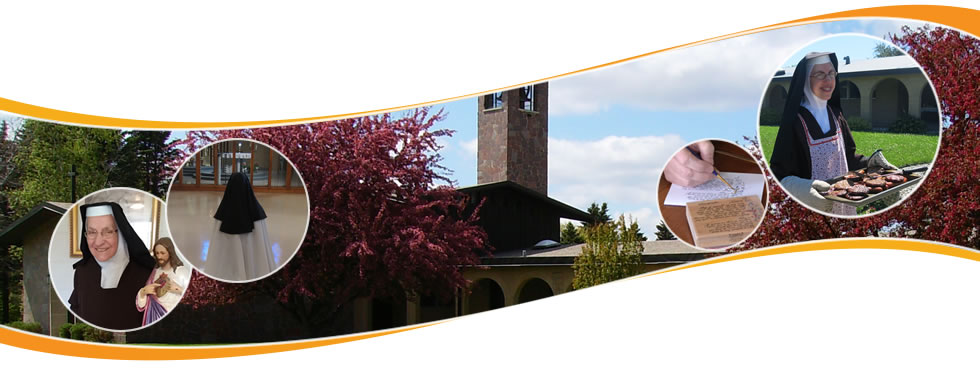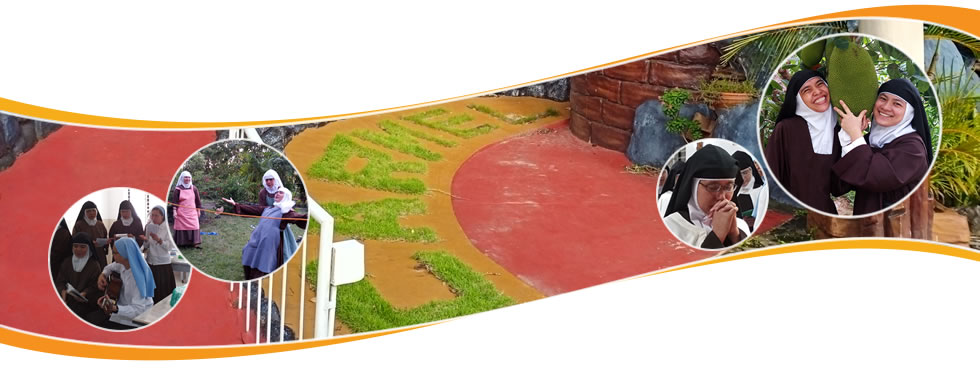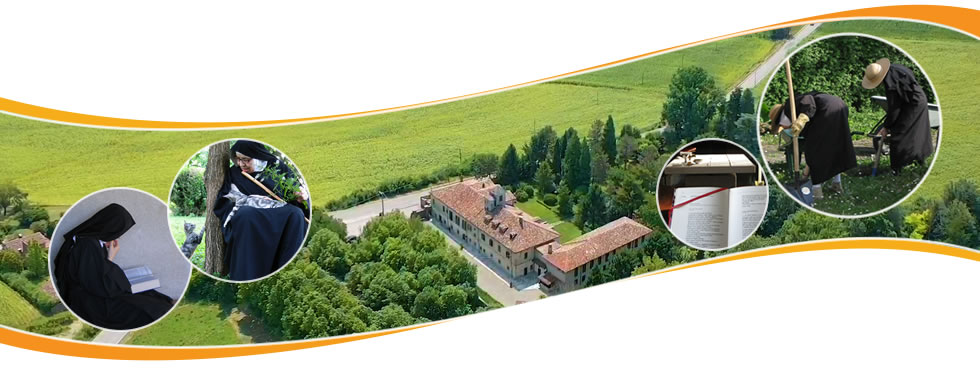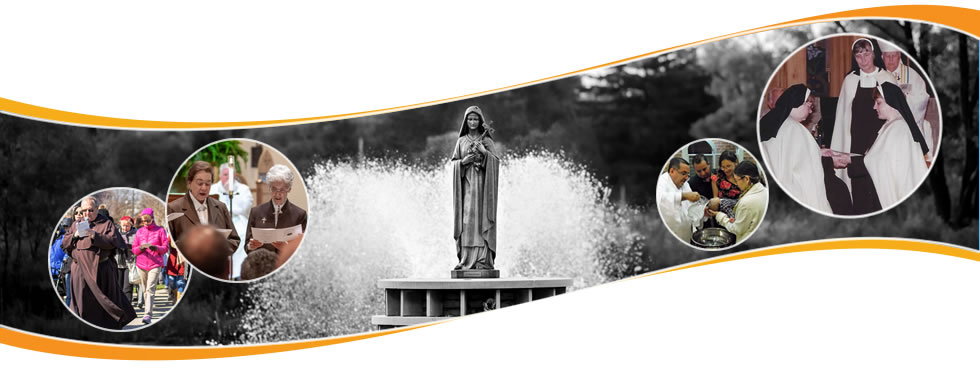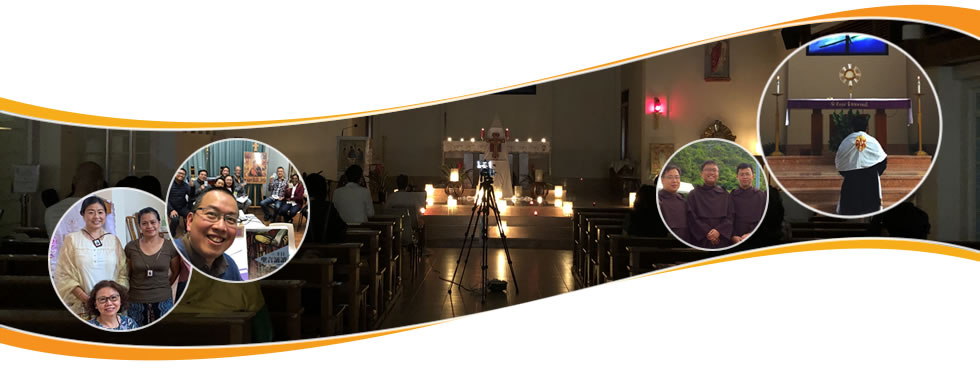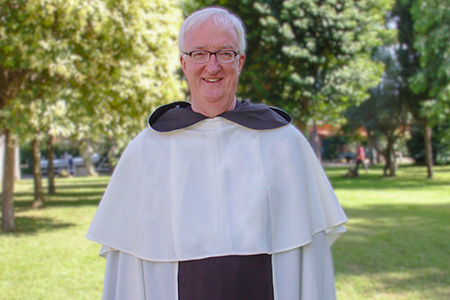Letter to the Order on the Occasion of the Fourth Centenary of the Canonization of St. Teresa of Jesus
Dear brothers and sisters, I believe we are living through a moment of great grace in our Order. The news that Titus Brandsma will be canonized very soon has moved hearts and minds in every Carmelite community. The next few weeks will be filled with the life and thoughts of this very saintly man. As I write this letter, I am conscious of a part of the life and thinking of Titus Brandsma that enriches the Carmelite Family in a very notable way, namely, his great interest in the life, experience, and writings of St. Teresa of Jesus.
On the 12th of March of this year, the Church will celebrate the fourth centenary of the canonization of Teresa of Avila, who was canonized on the same day as Ignatius of Loyola, Francis Xavier, Philip Neri and Isidore the Farmer. On that day, on the initiative of the Superior General of the Society of Jesus, there will a celebration of the five saints in the church of the Gesù in Rome. The new Superior General of the Discalced Carmelites, Fr. Miguel Márquez Calle, O.C.D., and myself have been invited to take part and to concelebrate with Pope Francis, as representatives of the Carmelite Family. Other members of our General Council will also participate.
This happy event is a very good occasion for building relationships with the Society of Jesus, whom I thank for their invitation, and it is also an occasion within the Carmelite Family itself, to reflect on the gift of our saints. Here, in this letter, through the eyes of Titus Brandsma, I would like to reflect on the gift of Teresa of Jesus to our Order and to the whole Church. Titus Brandsma shared some of the ways we have today of thinking about the Carmelite Family. He was aware of how the Carmelite charism is given to many people in the Church. In writing about Bl. John Soreth, he recognized the great work that Soreth had done by opening up to women the gifts of Carmel that only men had enjoyed up to then.[1] It is in this same spirit that he recognizes the great gift of Teresa to our Order because of the way that she helps people to a fuller appreciation of the Carmelite charism by helping people to come to a knowledge of the mystery of God in their lives.
Titus made no secret of his regard for Teresa of Jesus. His mother’s name was Teresa (Titjsie). Each year on the feast of Teresa of Jesus, Titus would write a special note to his mother for her feast day. Throughout his life, he prayed with Teresa’s Bookmark, “Let nothing disturb thee”. He began the translation of her works into Dutch with the help of other Carmelites, but did not complete the work, which was a source of great regret to him. Likewise, the biography that he was writing was on his mind right up to the end, so strong was his desire to make this saint known among the Dutch. When commenting on the translation with his great friend and mentor Hubertus Driessen, they surmised how much the translation of the works of Teresa, that they had published at that time, had “given again to the name of Carmel in Holland a good reputation as an Order of prayer and mysticism”[2].
There are two lectures of Titus Brandsma that might help us in a particular way to see the link between him and Teresa of Jesus. In the lecture that he delivered to the University of Nijmegen, under the title Godsbegrip (The Idea of God)[3] we find that the idea of God that most appeals to him is the idea of God who enters the life of every human being and will enter more and more into the person who by their way of living and believing make space for him to enter. In his words:
What I thus defend and consider to be indispensable for our time is the contemplation of all being in its dependence on God and its emergence from God whose work we have to see in everything and whose being we have to discern in everything. We also have to recognise and venerate God in all things, and first of all in ourselves. God is revealed to us in the depths of all things and in our own depths. God wishes to be seen and to be known. Nowhere is God to be known better than in the very depth of our being. If the thought about God’s indwelling, about the total dependence of all human nature on God, on God’s guidance and revelation was alive in everything, we would act quite differently and would adjust our behaviour to be in tune with God’s revelation.[4]
As he pronounced these words, it is possible that Titus was thinking about Teresa, from whom he learned about the union of the soul with God and the all-pervading nature of God in the life of the human person. Among the series of ten lectures that Titus Brandsma gave in his tour of the United States of America in 1935, one was dedicated entirely to Teresa of Jesus. In this lecture, in line with his understanding of the idea of God, he showed, relying mostly on the Interior Castle, how Teresa supported the idea of God entering more and more into the lives of people who know about God, accept God, and seek to know his love more and more. In the words of Titus:
St. Teresa paints the mystical life as something which develops in the soul, according to the soul’s natural ability, as the ultimate realisation of human powers. There have been implanted by God in human nature and will be realised when the soul is aware of its possibility to reach that highest degree of perfection and therefore gives up itself wholly into the hands of the Lord who alone is able to carry it to the highest of elevations. For all this, nothing else is asked of the soul than that it accomplish God’s wishes and desires, put its trust in Him, and in Him only finds its happiness. God likes to have an ordered love and he himself will order that love in the soul.[5]
Titus admired Teresa for the wonder of her experience and doctrine. He also admired her for her work of reform, believing that her reform is of benefit not only to the Discalced Carmelites but to the Carmelites of the Ancient Observance as well. In language that is very much part of the Discalced tradition Titus says:
Certainly, Mary stands foremost in the veneration of her brothers and sisters, but they don’t deem it is derogating from that beloved mother, when they honour the most graced of her children as another mother, a mother who gave them not existence, it is true, but who regenerated them to a new life.[6]
We now find ourselves is times and circumstances that challenge us to be aware of the true nature of our calling, and to respond to that calling with lives that give authentic witness to that calling. We are to live in a way that is faithful to what we say about ourselves, people called to live in allegiance to Jesus Christ, as contemplative people whose lives are shaped by prayer, fraternity, and service, and who follow in their lives the examples of Mary and Elijah. Titus saw in Teresa a saint who decided to return to the original inspiration of our Order, and to purify the life of the Order of all the accretions it had accrued over the centuries which served to distance its members from their original calling.
In this graced moment, as we rejoice in the prospect of Titus Brandsma being declared a saint, and honour Teresa of Jesus’ canonization, it cannot escape us that we have every reason to give thanks to God, to renew our lives, and to have confidence in the life we have chosen, as God has chosen it for us. With joy and commitment, we will share that life and wisdom with the Church as a whole and with each of our local Churches. For that reason, in the short time available, I encourage our communities throughout the world to celebrate the fourth centenary of the canonization of St. Teresa of Jesus, and to do so, where possible, in conjunction with members of the Discalced Carmelite Family.
May the remembrance and honour we give to St. Teresa of Jesus and our new saint to be Titus Brandsma, strengthen in each one of us our desire to see the face of the living God and do his will in all things.
Míceál O’Neill, O. Carm.
Prior General
5th March 2022
Download the Letter to the Order pdf here (220 KB)
[1] T. Brandsma, A New Dawn, The Carmelite Nuns, Bl. John Soreth, in Carmelite Mysticism Historical Sketches, Darien, Illinois: The Carmelite Press, 1986, 36-43.
[2] A. Staring, Fr. Titus Brandsma and St. Teresa of Avila, in Essays on Titus Brandsma, Rome: Carmel in the World Paperback, 1985. p. 207
[3] T. Brandsma, Mysticism in Action, Collected Works. Edd. Joseph Chalmers and Elizabeth Hense, Rome: Edizioni Carmelitane, 2021, 95-124.
[4] T. Brandsma, The Idea of God, in Mysticism in Action, Collected Works. Edd. Joseph Chalmers and Elizabeth Hense, Rome: Edizioni Carmelitane, 2021, p. 121.
[5] T. Brandsma, St. Teresa. The Growth of the Mystical Life, in Carmelite Mysticism Historical Sketches, Darien, Illinois: The Carmelite Press, 1986, p.46.
[6] Quoted in A. Staring, Fr. Titus Brandsma and St. Teresa of Avila, in Essays on Titus Brandsma, Rome: Carmel in the World Paperback, 1985. p. 208.






